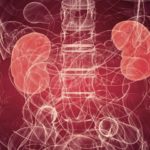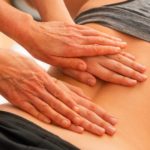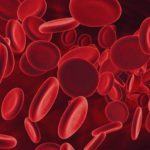Arthritis pain management – how to cope with pain?
Arthritis is a metabolic disease that is characterized by episodes of joint pain. It results due to an increased level of urate in the blood (hyperuricemia) because of its increased production or reduced excretion in urine. This disease affects usually middle-aged men and women after menopause. It may be associated with urate stone formation in kidneys. As the pain associated with arthritis can be severe, it’s crucial to know basic facts about arthritis pain management.
Arthritis
Arthritis can be acute or chronic and occurs due to the deposition of urate crystals in joints and surrounding connective tissue. Acute arthritis is the most common clinical presentation. Initially, usually, only one joint is affected but later on, multiple joints are involved by the inflammatory process. The great toe is usually involved first. Other joints of the foot, ankle, knees, and fingers can also be affected. Painful nodules may appear over these joints. They are called Heberden’s or Bouchard’s nodes and maybe the first manifestation of the disease. An acute episode usually starts in the middle of the night, waking the person up. The pain is severe and presents with redness and swelling of the joint. It becomes warm and tender to touch. These attacks usually subside with simple treatment in 5-10 days. Typically, these attacks are precipitated by dietary excess of protein, injury, surgery, alcohol consumption, and any serious illness like stroke.
Diagnosis
A fine needle is used to aspirate fluid from the involved joint or the overlying nodule. The collected substance is examined under a microscope to detect the diagnostic needle-shaped urate crystals.
The uric acid level in the blood is also checked. Though these levels are mostly elevated, they can be low or normal at the time of the acute attack because of the uricosuric effect (increasing urine excretion of urate) of inflammatory mediators. So this becomes a limiting factor in the diagnosis of this acute condition. A 24-hour urine collection is assessed to calculate the total uric acid excretion. If this is more than 800 milligrams of uric acid per day on a normal diet, it indicates overproduction of uric acid.
Radiographic imaging in the form of x-rays or CT scanning shows evidence of bone and joint destruction in chronic cases.
Pain management and treatment
During an acute episode of arthritis, it is most important to provide pain relief. It can be achieved by giving a rest to the inflamed joint by avoiding walking or weight-bearing. Use of cold fomentation by ice-pack also helps in reduction of pain and swelling. Avoid consumption of beer and a high protein diet during the episode.
Anti-inflammatory medications like Ibuprofen, indomethacin, or diclofenac are useful in mild symptoms. They are usually sufficient in 80-90% of the patients. The symptoms subside in 5-7 days. Oral glucocorticoids like Prednisone can be added. If severe pain persists, then intra-articular injection of steroids (glucocorticoids) can be given. These drugs have a strong anti-inflammatory mechanism of action. That is why they require to be injected by a physician in an aseptic method so as to prevent secondary infection of the involved joint.
If symptoms still persist, it is advised to consult a physician. A higher level of treatment with the use of colchicine is strictly done under medical supervision.
Reduction of blood uric acid levels
To begin with, this can be achieved by reduction of body weight, cutting down the intake of purine containing foods (mushrooms, spinach, asparagus, cauliflower, beer, sardines, yeast, legumes, meat extracts), avoiding alcohol, and increasing fluid consumption (1.5 to 2 L water per day). The uric acid level should be brought down to 5-6 mg/dl. Urate lowering treatment is started in patients with nodules and chronic arthritis.
Uricosuric drugs increase the excretion of uric acid in urine. However, they are used only in patients with good kidney functions and when their urinary uric acid levels are not already high. The urine volume should be maintained with adequate water intake. Probenecid is an example of a uricosuric drug. Another method is to reduce the overproduction of uric acid. Allopurinol acts by this mechanism and it is used especially in patients with kidney stones.
Arthritis can also be precipitated by certain foods. Being aware of this disease is the best way to reduce the frequency of acute episodes. Severe disease requires expert management by a physician.




























